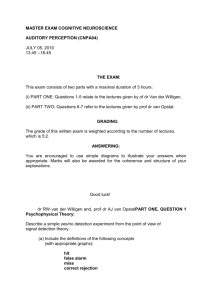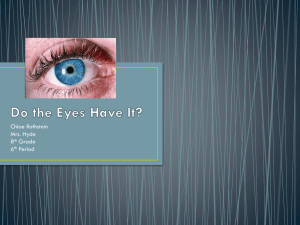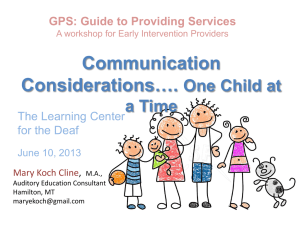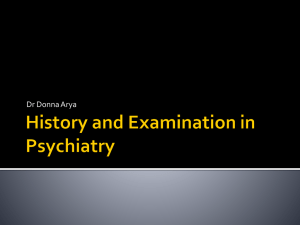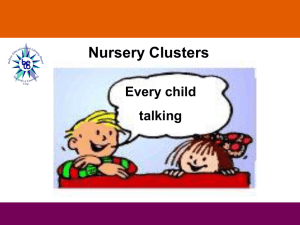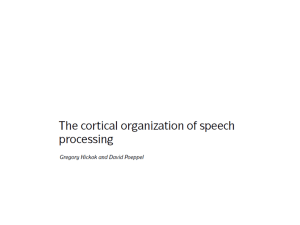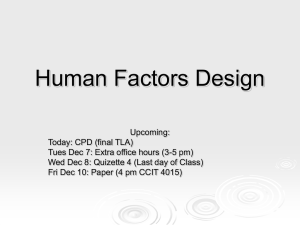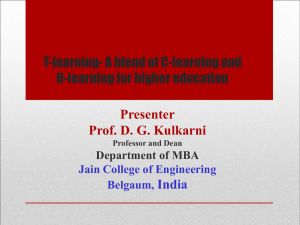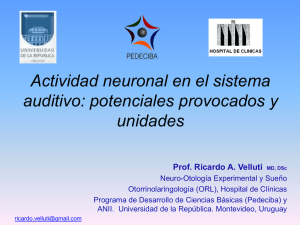UnderstandingProcessingDeficits
advertisement
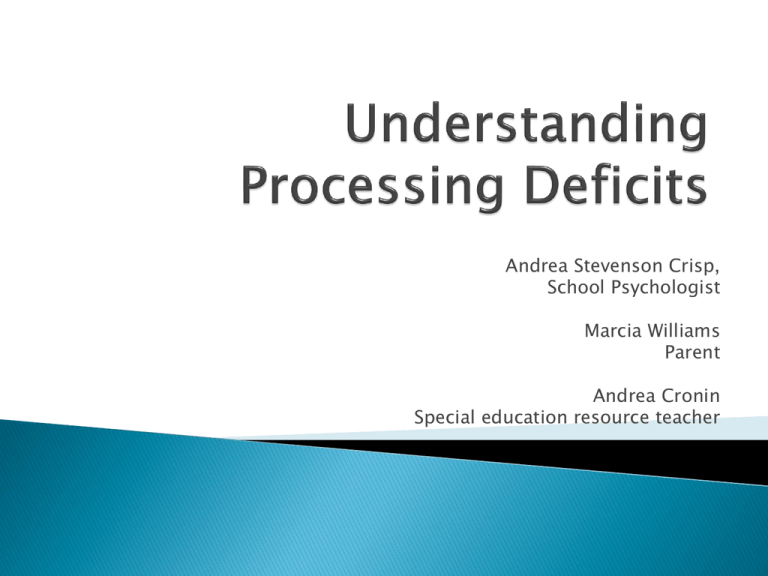
Andrea Stevenson Crisp, School Psychologist Marcia Williams Parent Andrea Cronin Special education resource teacher Processing refers to how the brain takes in, uses, learns, reasons, stores, retrieves, and expresses information. EVERYONE PROCESSES! Some individuals may have more difficulty in one or more areas of processing, Since Public Law 94-142, federal legislation has defined a learning disability as “a disorder in one or more of the basic psychological processes involved in understanding or in using language, spoken or written, that may manifest itself in an imperfect ability to listen, think, speak, read, write, spell, or to do mathematical calculations.” Learning, gaining knowledge and procedures, depends on the integration of many processes in the human brain. Taking in selected information through one or more senses (Visual and Auditory) Manipulating that information in short-term or working memory Encoding the information into long-term storage Retrieving the information to produce an expression or response. Executive Processing Metacognition Working memory Attention Auditory Processing Visual Processing Visual Motor Processing Expression Response Long-Term Storage and Retrieval Short term memory Working memory Long term retrieval and storage milk banana Oak hurricane apple refraction ocean blue Buick Maple petulance Dodge mustard wind Chevrolet hamburger orange kiwi ubiquitous onion Pine nurse SHORT TERM MEMORY requires storage of information for a brief period of time. WORKING MEMORY is conscious processing. It involves manipulation of information. 1) uses information that is available in short term memory or retrieves information from long-term memory (or both) 2) performs some action on these two stores of information 3) then stores the new product in long-term memory or uses it to make a response. Working memory capacity is limited. Automaticity is the idea that information can be processed with little effort or attention. So, a reader who has developed decoding automaticity has more working memory resources to devote to reading comprehension. The ability to store information in long-term memory and fluently retrieve it later. It’s the process of storing (encoding) and retrieving information. It’s not necessarily the knowledge that is stored in long-term memory, but HOW the brain stores and retrieves that information. Some students have information in long-term memory but have difficulty retrieving it. They can recognize information and understand it, but cannot express what they know. Encoding Strategies: ◦ ◦ ◦ ◦ Frequent practice and repetition Visual cues Mnemonics Connecting information to prior knowledge Retrieval Strategies: Multiple choice Color coding Word bank Visual cues Working memory processes information that is both VISUAL and AUDITORY. ◦ Seeing differences between things ◦ Remembering visual details Visual Processing involves how well your brain can use, interpret, and process visual information. ◦ Filling in missing parts in pictures ◦ Visualization and imagination ◦ Spatial relations Have difficulty seeing similarities and differences in pictures, letters, numbers, words, and groups of objects. Confuse left from right when presented with visual materials Have difficulty recognizing the same word when repeated in a sentence or passage Have difficulty remembering and sequencing visual information (letters and numbers) Have difficulty seeing spatial relationships and patterns. Accommodations for Visual Processing Deficits Visual-Motor difficulties are typically associated with difficulties with writing and hand/eye coordination tasks Have difficulty with hand-eye coordination tasks (cutting with scissors, catching a ball) Have difficulty forming letters when printing or writing Have difficulty copying from the board or book Have difficulty planning and placing a written product on a page Accommodations and Strategies for VisualMotor Delays Auditory Processing involves how well a student can understand and process auditory information that is presented orally. ◦ Hearing differences between sounds/voices ◦ Remembering specific words or numbers ◦ Remember general sound patterns ◦ Understanding even when they miss some sounds ◦ Blending parts of words together Take longer to answer questions orally Have difficulty remembering information presented orally Have difficulty listening to and comprehending information given orally Asks for oral questions and directions to be repeated Have difficulty following multi-step directions presented orally Students with difficulties in auditory processing usually have the most difficulty in reading, writing, and language (understanding and expressing). Auditory discrimination ◦ The ability to recognize differences in phonemes (sounds) ◦ Auditory memory: The ability to store and recall information which was given verbally.. Auditory sequencing: the ability to remember or reconstruct the order of items in a list or the order of sounds in a word. Auditory blending: the process of putting together phonemes to form words. (the individual phonemes “c”, “a”, and “t” are blended to form the word “cat”). Accommodations for Auditory Processing Difficulties Executive Processing oversees and manages all other types of cognitive processing. Executing Processing includes: ◦ ◦ ◦ ◦ ◦ ◦ Setting goals Planning Self-monitoring Self-regulating Solving problems Adjusting Many students with ADHD and learning disabilities have deficiencies in Executive Processing. Accommodations for Executive Processing Difficulties When an individual consciously uses executive control processes, it is METACOGNITION. Making the decision to write down a grocery list because you know you can’t remember everything, is metacognition. Knowing one’s processing strengths and weaknesses is very important to metacognition. A reader with good metacognition will be aware of when they come to a word they don’t know or doesn’t make sense. Poor readers often don’t detect errors in the text and are unaware that they are lacking comprehension as they read. It’s critical that students understand how they learn and what they need to do to be successful. If they have a disability, teach them about their disability and what it means about how they learn.

